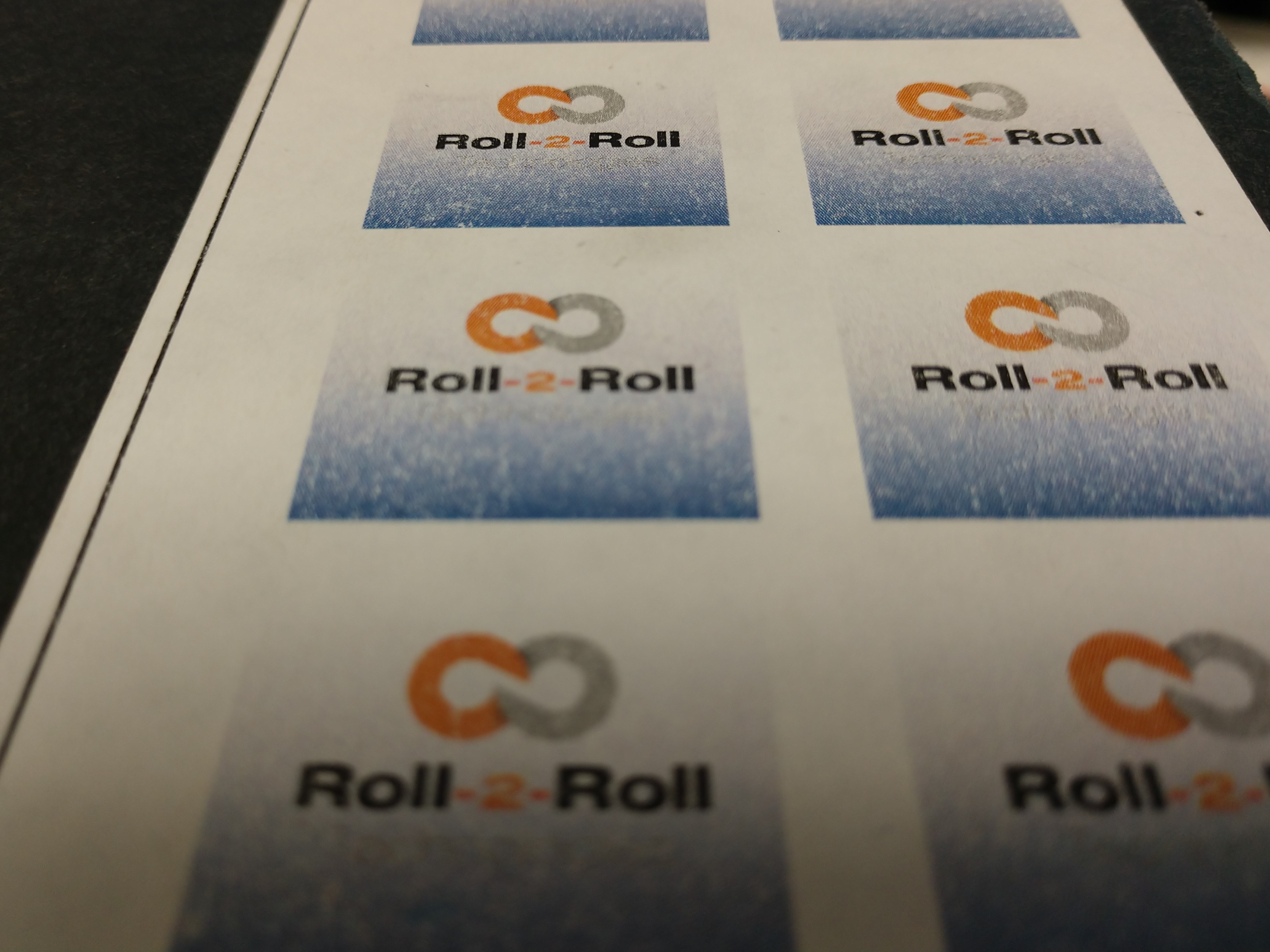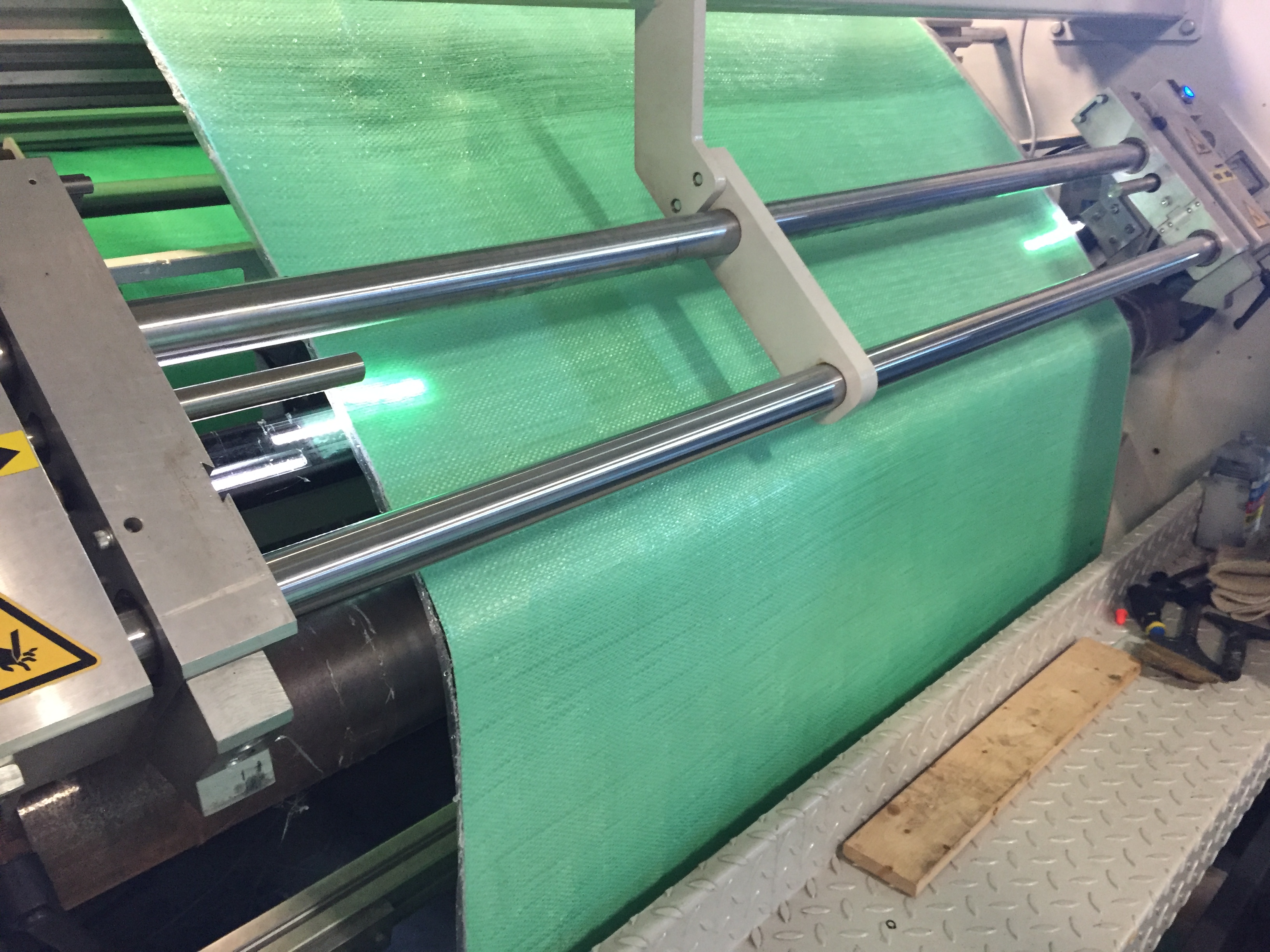Features on the surface of the web as a detection target in Contrast Sensing
Contrast sensing relies on detecting a feature on the surface of the web. This feature can be printed, laminated or embossed. This is a great application when the printed, laminated or embossed features are relevant to the positioning of the web instead of the edge of the web.
Slitting operations are good examples of how a contrast sensing application is used.
When slitting a printed web, the location of the print on the resulting rolls is of great importance. In many cases, the printer will add a line to be used as a guiding reference. The sensor tracks the location of the line. This information is used by the web guide system to reposition the web based on that line. This specific application is known as line guiding.

However, there are many other ways that contrast sensing applications can be used. It is possible to guide based on features of the printed web. This allows for multiple options in guiding. Granted, not all available technologies can do this, but we can.

Applications
Contrast sensing can also be used to measure and/or monitor width. It is possible to measure the width of a material that is laminated within another material. The width of an overlap can also be measured and monitored. All this allows for greater control of the converting operation.

Contrast sensing can also be used to detect intentional marks on the web. This can be used to monitor speed of a web, mark defects,
All the options above have addressed detecting a printed feature. This does not have to be the limitation. Embossed features, intentional changes on the web construction or event ridges can be used for the purpose of contrast sensing applications. In general, if you can see it with the naked eye, it is probable that it can be detected by our contrast sensing application. So, selvages on textiles, one specific line printed within other lines, edges of labels, uv markings and lines, ridges on surfaces or materials laminated within films are all possible. We can help you determine a solution with contrast sensing today!
